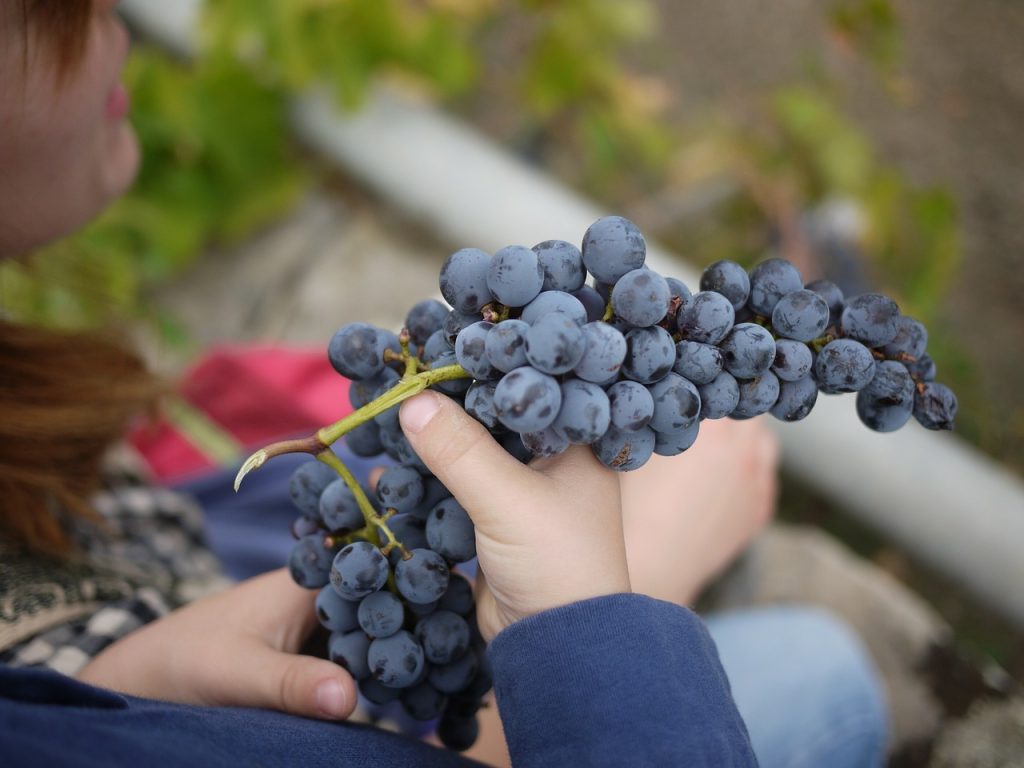Croatia will produced excellent quality wines this year, but marketing problems remain. During 2016 the trend of importing cheap wine continued
Despite demands by winemakers to increase market inspections, they did not happen. Where is the opportunity for export of Croatian wines and what should be done, answers dr.sc. Đuro Horvat, marketing and wine market consultant, in an interview for Agrobiz.hr on October 15, 2016.
The grape harvest is near the end. What are the estimates for this year, is the crop good and will we have a good year in winemaking?
“We can say this year’s grape harvest was exceptionally good in quality and yield. At this moment it is nearing the end in all winegrowing regions so the wines will be of excellent quality. This year’s harvest reminds of the one in 2013, which means we will have quality wines and plentiful supply. The ratios of acids and sugars are good, grapes are perfectly healthy, without any indications of mould or any other diseases with especially high sugar and extract content. I completely support the initiative that Croatian wine should be rated according to harvests and not only b producers, as 2016 seems ideal to introduce this new approach in rating the Croatian wine sector.”
Has anything changed in the market for 2016 in the sense of reducing the stock of domestic wine (due to increased tourism) or has export been increased? What are the market trends?
“Unfortunately, I must say there is a great battle on the wine market in Croatia. The export strategy of wine still does not achieve desired goals while wine import is still dramatically rising compared to export. In the first six months of 2016 wine export has grown in quantity, the index is 107 and financial 103, while import in the same period has grown in quantity to 114 and financial to 104. The image is more than dramatic especially if we look at the period since Croatia entered the EU. In 2013, the ratio of export and import was 1:5 litres. In 2016 the ratio has dramatically changed and stands at 1:15 litres. The average export price is still significantly above the import price at 3.7 USD/L, while the average import price is nearly 1 USD/L. In 2015, grape production rose by 14% compared to 2014. The overlap of import with export is very low and amounts to 8% in quantity and around 28% financially. The level of consumption per capita is at the 2015 level, so we can conclude the imperative is to increase export as wine production increases, with new plantations joining the harvest.”
As a nation, have we begun to feel the EU membership through wine export or have we remained in the traditional regional markets?
“The placement of wines on the EU market is mildly increasing, especially in the German and Polish markets with a trend of increased consumption of Croatian wines. Exports to traditional markets is stagnating, except on the Montenegro market where there is significant growth in quantity and finances, so it is currently right behind the German market. This means there is potential in the neighbouring markets. Strategically, if the cited negative trend continues, it is almost certain domestic production will face more serious problems.”
What are the key issues faced by winemakers today?
“Certainly one of the key problems is operational implementation of the adopted wine export strategy by the Winemakers Association with the Croatian Chamber of Commerce through the joint project “Wines Croatia-Wines Mosaica. So, the key problems are the following: lack of unified concept of preferential strategic products of the domestic production sector, lack of concrete support of the relevant ministry, difficult (expensive) placement on the domestic market, weak positioning of Croatia as a wine destination, a key prerequisite for the sale of high quality and superior wines in the targeted price level. Furthermore, inadequate supply for a serious national and global market approach and weak market control in terms of import control and disloyal competition and finally the absence of the wine sector in existing communication platforms. To this we must add the living standard of citizens. A conclusion is obvious, meaning only inter-sector connections and stimulative environment represents a road to competitiveness as a key presumption of sustainable development of this activity.”
Where do you see our chance and where have we gone wrong in wines?
It is high time for professional, or competent, marketing management to begin running the strategy of market approach and wine marketing. The proposal of an organisational model of the wine sector of Croatia needs to be articulated based on experiences of successful wine nations, who have in recent years achieved a move forward to the most successful wine nations in the world. Current efforts of the Croatian Chamber of Commerce with winemakers in their craftsmen’s association have unfortunately not been recognised enough in the wider public and cannot achieve maximum effect. This will happen when there is political will, meaning the Croatian government must recognise wine as part of the mosaic of Croatian tourism. Furthermore, one downside is the non-integration of wine as a strategic Croatian product in the national strategy and a too large ratio of international sorts compared to indigenous. Insufficient promotion of the significance of Croatian sorts and Croats in the formation of the international wine scene (Tribidrag-Primitivo-Zinfandel). TO this we need to add the lack of a unique marketing strategy of branding Croatia as a wine destination – “Wines Croatia-Wines Mosaica.”
The impression is that we have many winemakers, too many brands and lots of money invested in marketing and investments, but poor effects. Are winemakers too far in debt or do they make a profit?
“I wouldn’t agree we have many, but I would say there are many who don’t see the advantages of mutual integration which enables the rise of competitiveness. This is confirmed by experiences of the most powerful winemakers in Europe and around the world. The results are not achieved by forcing our own labels, but our joint brand “Wines Croatia-wines Mosaica,” meaning our four wine regions: Dalmatia, Slavonia and Croatian Danube region, Istria and Kvarner and Hills of Croatia. For our branding as a wine nation, this is an imperative of competitiveness.”
Which model is profitable in winemaking – be small and have your own brand or join forces with other and seek higher supply and export?
“Wines Croatia-wines Mosaica” is a project that offers synergy effects, as the joint goals are defined and regulate mutual relations regardless of the size of winemakers. It’s a matrix upon which to build activities of the Croatian wine brand story. By realising it we will gain new added value and satisfaction with all participants from suppliers, winegrowers, winemakers, traders and consumers. If we are an affirmed wine destination in the mind of the global wine consumer, then we would certainly tell success stories. This very target group would with more trust be ready to give their money for Croatian wine as they would for any other established global wine destination. Such a strategy would reap higher and primarily faster recognition of Croatia as a wine destination, its sorts, especially indigenous. However, that direction would require absolute price competitiveness, indisputable quality and prompt activity and answers for the demanding and dynamic wine market in the sense of marketing investments and excellence of all in the chain of value. Only in such a way would this strategy and approach be sustainable in the long term. To achieve higher strategic goals which would contribute to the complete affirmation of the sector it is necessary to affirm exceptional, undiscovered and special stories that can handle the toughest challenges of the sector at a global level.”
At the beginning of the year we spoke of imported wine of suspect quality and very low price and how hard it is to compete. Winemakers demanded better inspections. Has anything changed for the better?
“Previous indicators show the trend has continued and that the Croatian wine product competes with very strong competition from other wine countries. The price of import from other countries is under 1 Euro. The lowest prices of wines in 2 litre or larger packaging comes from Italy at the price of 0.38 Euro, Kosovo at 0.49 Euro and Macedonia at 0.65 Euro. Controls are of weak intensity and we have reached numbers that indicate the import of wine amounts to one third of Croatian wine consumption. We do not control the trafficking of grapes enough, which is a prerequisite to controlling the grey zone. This results in the declared consumption per inhabitant around 20 litres, or around 26 litres if the grey zone is added. It is important to note the wine association prepared proposals of regulations for the new Wine Law, coherent with discussions at the Council for the monitoring and advancement of the state of winegrowing and winemaking, which cannot see the light of day, although the proposal is a result of a wide discussion among Croatian winemakers and winegrowers who achieved consensus along with respecting EU laws. The Agriculture Ministry does not answer and Croatian winemakers are still in an unfair competition.”
Why do Croats drink cheap wine? Which layer of citizens drinks domestic, and which imported wines?
“Most Croatian consumers favour lower prices. We will not mention the social aspect and problems in our society, but they do favour the increasing trend of the consumption of cheap imported wine. However, the average Croatian consumer is loyal and traditional. But at the same time, that same consumer is exposed daily to a wide array of new wines, which is a challenge to leaving one’s comfort zone in the desire to meet new destinations, sorts, stories and sensations. Remaining with domestic wines and brands is determined by the competitiveness of domestic producers, their availability on the market but also the strengthening of trust and rise of living standards of the society.”
Which markets can we export to and which wines? Is our chance in tourism or do we have to go beyond Croatia?
“A chance is surely tourism, especially the experience tourism that must and needs to be an addition to the Croatian coast and summer season. Creating new touristic integrated products tied to a destination in the narrow sense and region in the wider sense are an absolute priority to achieving higher sales. Export , regardless of the majority of domestic sales, is necessary for the sustainability of the wine sector and achieving strategic goals I talked of. Which wines to export? Sorts Graševina, Malvasia, Pošip, Škrlet of the whites; Plavac Mali, Terrano and Frankovka from the reds… but all wines with labels of wine houses with authority, regardless of the sort. Wines with signatures of winemakers and terroirs which have already found their way into the world and are in the lead. Where? Where we have already invested a lot but were not able to stay consistent with the national strategy so we remained incomplete for markets significant in creating a global image, requiring great effort and investments. These markets are at the same time increasing their touristic visits to Croatia – Great Britain, Scandinavia, Benelux. So called third countries, not only the former Yugoslav nations; I prioritise Japan and Canada, followed by the USA. Also markets of certain EU countries such as Poland, Germany, Austria and potentially Czech Republic. Special challenges are France, Italy and Spain as they are large emitting wine countries.”












